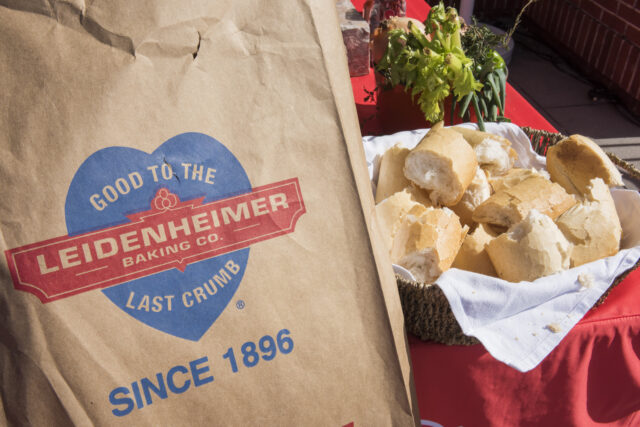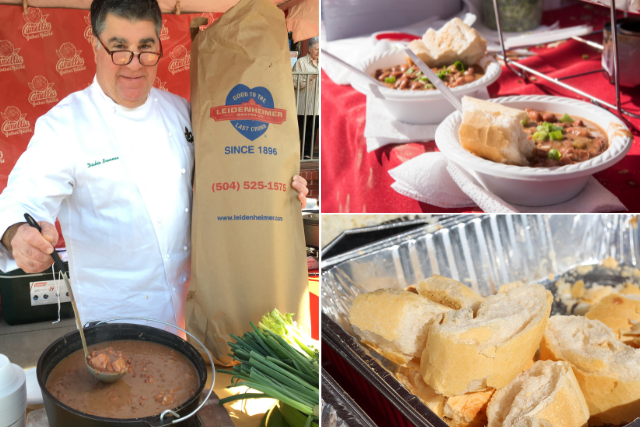No Matter How You Slice It, Leidenheimer French Bread Goes with Red Beans and Rice
When a plate of red beans and rice with French bread comes to the table, a debate can sometimes arise about the correct way to eat it.
Should the French bread be used as a scoop, a way to soak up the last bits, or as a separate accompaniment slathered with butter? Then again, why make a choice?
Just like the debate over who makes the best red beans and rice, the debate over how to eat the French bread is ongoing. But no matter the preferred eating style, all agree that the French bread has to be from Leidenheimer Baking Company.
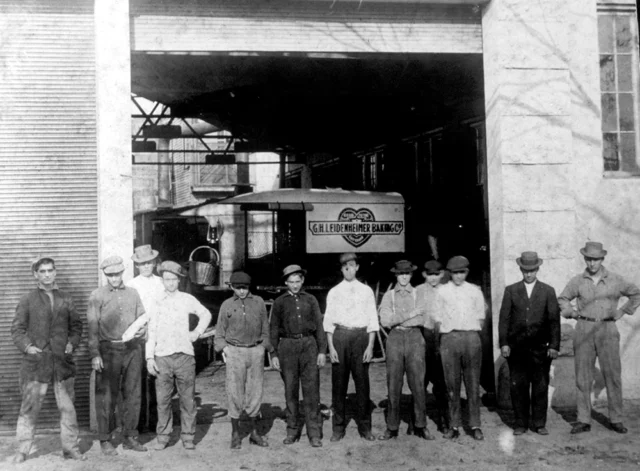
French Bread in New Orleans
Leidenheimer’s was founded 1896 by George Leidenheimer, when New Orleans was teeming with bakeries. About a decade beforehand, the City Directory listed 150 bakeries.
Leidenheimer immigrated years earlier from Deidesheim, Germany. He opened the bakery on Dryades Street and in 1904, moved it to the corner of Simon Bolivar Avenue in Central City, where it remains today.
At first, Leidenheimer made the heavy, dense breads he was more familiar with from Germany; however, around 1905, the bakery segued to making French bread, in addition to other types of breads popular during that time period.
How much did a loaf of French bread cost? At the turn of the century, it was somewhere in the neighborhood of a nickel per loaf.
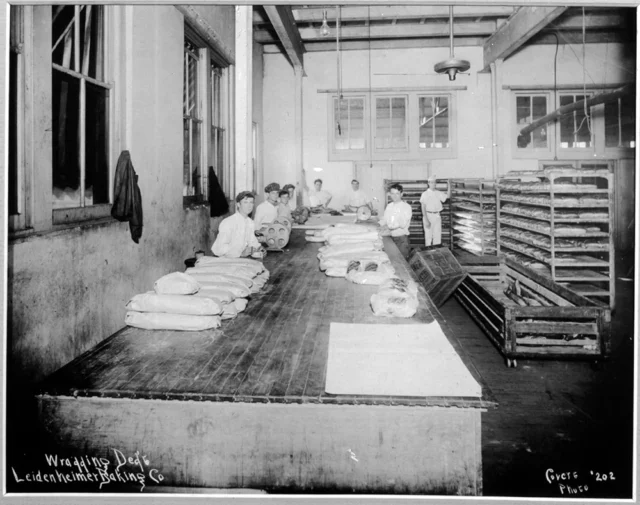
The Proof is In the Water
What gives Leidenheimer’s French bread its flaky, thin crust and fluffy interior is a combination of interesting influences, but the Mississippi River’s hard water plays a big role.
Other factors include the fermentation process and the weather.
“We naturally ferment our dough, allowing it to age and develop flavor and its unique crumb characteristics,” says bakery Director of Operations and fifth-generation owner William Whann.
“Our bake time varies based on the ambient temperature. We have to put a considerably harder bake on our products during the hotter months because the New Orleans humidity will soften the bread’s signature crust,” he added.
But even with the introduction of technology, the bakery still harkens to its roots.
“While we have incorporated the use of automation to increase output,” says Whann, “human touch will always play an important role in our products. Every po-boy loaf produced at Leidenheimer is still hand-stretched to its signature 32-inch length.”
Po-boy bread in New Orleans is often referred to as French bread and vice versa, but they started out differently.
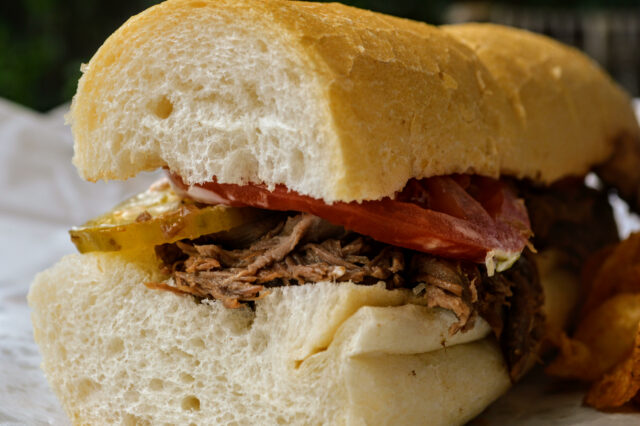
While French bread had been available in some variation since the city was founded in 1718, po-boy bread was introduced to New Orleanians in 1929. The first po-boys — sandwiches that can be filled with an infinite amount of combinations — were credited to Martin Brother’s Grocery which made them during a streetcar strike. The brothers, who had been streetcar conductors, decided to help out and created a loaf of bread for the “poor boys” to eat or share with their families.
Originally, a typical French bread was a family loaf roughly 16-inches long. It was fatter in the middle at around 4- to 5-inches wide, with narrow, pointed ends. Notes Whann, po-boy bread was developed as a long loaf uniform in width – because when making sandwiches, restaurants were having to throw away the unusable ends.
In the past, New Orleanians may have used the ends of the French bread as a makeshift bowl for their red beans and rice. According to a Southern Foodways 2006 interview with Joe Darensberg, whose family worked at the bakery for generations, “My dad said, ‘We put red beans in the ends of the French bread …” (Perhaps the ends worked well as a large scoop!)
Leidenheimer Today and Beyond
Today, Leidenheimer customers can order different sizes of its French/po-boy bread depending on their needs. The company is the largest producer of French bread in New Orleans.
The bakery also makes pistolettes with the same formula that range in size from 4 inches to 12 inches and is the largest producer of muffuletta bread in the country.
“We bake and deliver tens of thousands of loaves daily to both local and national customers,” says Whann.
“In addition to supporting the needs of our incredibly loyal, local customers, we have had the unique opportunity in recent years to connect with restaurants and chefs all over the country through social media, which has been an incredible experience to see how people are using the product across the States,” says Whann.
Working with Whann in the bakery business is his father, Sandy Whann, president; aunt Katherine Whann, office manager; and sister Katie Whann, marketing and social. Mitch Abide has been the longtime plant manager.
While some may argue cornbread is a go-to accompaniment to red beans and rice, for many, only a slice of Leidenheimer’s French bread will do.
leidenheimer.com/; on Instagram; 504.525.1575.
